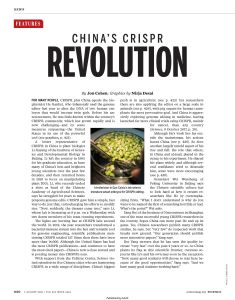Join getAbstract to access the summary!

Join getAbstract to access the summary!
Nirja Desai and Jon Cohen
China’s CRISPR Revolution
Editing of plant, animal and human genomes has never been easier, as this country’s scientists are rapidly demonstrating.
Science, 2019
What's inside?
China is applying the gene-editing technology CRISPR to plants, animals and even humans.
Recommendation
China has more scientists using CRISPR than any other country. They’re not just making designer babies like He Jiankui did, much to the chagrin of his colleagues. Instead, they’re trying to engineer crops to help feed China’s growing population, make more accurate animal models to study diseases and provide organs for transplant, and develop more precise and effective medications. And like most governments around the world, the Chinese government is still struggling to figure out how to regulate the technology. This article offers an overview of how Chinese scientists are wielding this gene-editing tool.
Summary
About the Authors
Jon Cohen is a staff writer at Science magazine who covers biomedicine, HIV/AIDS, immunology, vaccines, genetics and global health. His reporting has appeared in publications including The New Yorker, The New York Times Magazine, Smithsonian, Outside, and Slate.



















Comment on this summary